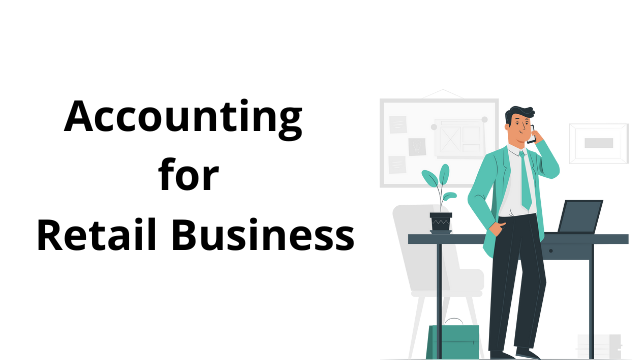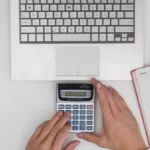Accounting for Retail Business
You want to manage your firm as effectively as possible as a business owner. This entails recruiting educated personnel to assist with accounting responsibilities. Bringing on a staff, however, may not be viable depending on where your retail store is at in terms of sales. The good news is that you can perform various accounting tasks on your own.

Let’s look at the accounting tasks you can undertake on your own and the best ways to execute them.
What distinguishes retail accounting from standard commercial accounting?
Before we go into the retail accounting process, it’s crucial to grasp the distinction between ordinary accounting and retail accounting.
To be honest, both retail stores and other sorts of enterprises must keep detailed financial records. A retail firm, on the other hand, must deal with inventories. Other businesses, such as a legal firm, do not have to worry about keeping track of items or stock levels.
3 Methods for accounting for inventory expenses in retail accounting
As inventory is such an important component of retail, it is crucial to select an inventory costing technique that is appropriate for your company and the products you sell. There are three primary methods for managing inventory and estimating inventory costs:
- The retail method
- First in, First out (FIFO)
- Last in, Last out (LIFO)
Retail Method
The retail inventory technique is a traditional approach to retail accounting that is used to calculate the worth of your retail store’s inventory. The retail inventory technique is best seen as the link between the inventory cost and its corresponding retail price.
Because this method of inventory costing does not account for broken or stolen items, it should only be used to estimate the worth of your inventory. If you want to employ this approach, you should also consider conducting a physical inventory as a quality assurance check.
First in, first out (FIFO) method
First-in, first-out (FIFO) is a method for calculating ending inventory costs that focuses on cost flow. The FIFO technique presupposes that inventory acquisition expenses will be recorded first. When you use this method, the value of your overall inventory will fall.
Last in, First out (LIFO)
LIFO is diametrically opposed to FIFO. With the LIFO technique, the most recent things purchased are deemed the first to be sold. As a result, the cost of sales is decided by the most recent purchase price.
How to keep track of your inventory?
In contrast to inventory costs, tracking inventory on hand is quite simple. The idea is to keep track of how much inventory you have on hand at any one time. This information is critical for retail accounting since it provides you with precise cost and prediction information.
Maintaining proper inventory records will also help you save time when completing your tax returns.
Inventory tracking: Manual vs. Automated
Unless you choose to compute inventory manually, the perpetual approach is the best way to track inventory in stock. With a fully integrated point-of-sale (POS) system, you can keep track of the things you sell as they change.
You may not require a separate POS if you sell online with PayPal, Stripe, or Square. Instead, you may run a clever auto-tracker in the background to automatically enter all changes into your accounting software following a sale.
If you sell offline, you’ll need a POS system that assigns a barcode to each item. When you sell an item and scan its barcode, the numbers in your inventory will instantly adjust.
What is the accounting cycle for retail businesses like?
Once you’ve decided on an inventory costing technique and established a smart system for inventory tracking, it’s time to work on fine-tuning the accounting cycle. The accounting cycle for retail stores includes the following milestones:
Recording Transactions
Tax season, as professional accountants like to say, never ends. The key to a stress-free tax season is to meticulously document all income and expense transactions throughout the year.
Because most retail shop owners are not experienced accountants, it is highly suggested that they use dependable accounting software. Rather than having to worry about manually performing accounting activities, your retail accounting software will generate reports, reconcile accounts, and keep your books up to date.
Producing Financial Statements
You’ll want to look at three financial statements as you go through the retail accounting cycle: income statement, balance sheet, and cash flow statement. These financial statements include critical information that can assist you in making critical company choices.
Transaction Reconciliation
Balancing the books is the final phase in the accounting cycle for a retail store. This phase is often completed monthly and aids in reconciling your records with the actual amount on your company accounts. If any inconsistencies, mistakes, or unlawful spending are discovered during reconciliation, make the necessary modifications and record them in your general ledger.


